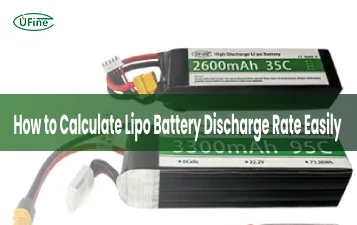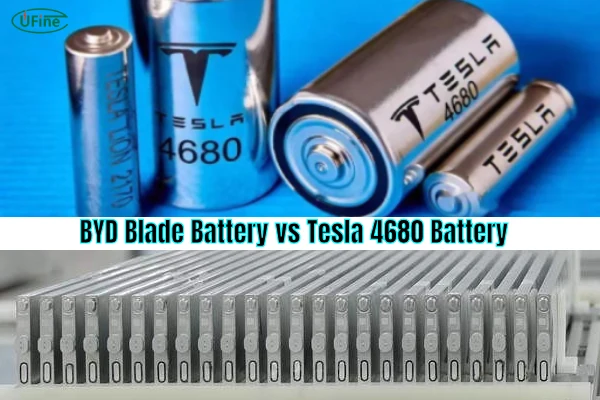The race for better batteries is transforming the electric vehicle (EV) industry. Two frontrunners in this competition are the BYD Blade Battery and the Tesla 4680 Battery. Each introduces innovative features and unique advantages that cater to different needs.
This article breaks down their differences across 10 crucial factors, offering a detailed yet easy-to-understand comparison. By the end, you’ll know exactly which battery aligns with your priorities—whether it’s safety, cost-efficiency, or performance.
BYD Blade Battery Comprehensive Guide
Part 1. Battery materials
BYD Blade Battery:
The BYD Blade Battery uses lithium iron phosphate (LFP) chemistry. LFP materials are stable, cost-effective, and free from cobalt and nickel, making them more environmentally friendly. This choice also ensures better safety and longevity.
Tesla 4680 Battery:
Tesla’s 4680 Battery relies on nickel-cobalt-aluminum (NCA) chemistry. This mix enhances energy density and performance, but it includes cobalt, which is costly and raises ethical and environmental concerns due to mining practices.
Key Takeaway: BYD focuses on safety and sustainability, while Tesla prioritizes energy density and high performance.
Part 2. Energy density
Tesla 4680 Battery:
Tesla’s cylindrical 4680 cells boast superior energy density, allowing vehicles to travel farther on a single charge. This makes Tesla’s battery a top choice for range-focused EVs.
BYD Blade Battery:
While the Blade Battery’s energy density is lower, its innovative blade-like design compensates by optimizing space utilization, ensuring competitive performance in real-world applications.
Key Takeaway: Tesla leads in energy density, but BYD’s design maximizes practical efficiency.
Part 3. Cycle life
BYD Blade Battery:
Thanks to its LFP chemistry, the Blade Battery offers a cycle life exceeding 4,000 cycles. This longevity is perfect for applications requiring frequent charging, such as taxis and buses.
Tesla 4680 Battery:
The 4680 Battery achieves around 1,500–3,000 cycles, depending on usage. While it performs well for personal vehicles, it may not match BYD’s durability for heavy-duty applications.
Key Takeaway: BYD’s Blade Battery outlasts Tesla’s 4680 Battery in terms of longevity.
Part 4. Space utilization
BYD Blade Battery:
BYD’s cell-to-pack (CTP) design eliminates traditional modules, arranging cells as flat, blade-like structures. This innovation minimizes unused space within the battery pack.
Tesla 4680 Battery:
Tesla’s cylindrical cells use a tabless design, improving energy flow and manufacturing simplicity. However, cylindrical shapes naturally create gaps when packed together, reducing space efficiency.
Key Takeaway: BYD excels in space optimization with its compact blade design, while Tesla emphasizes energy efficiency at the cell level.
Part 5. Weight
Tesla 4680 Battery:
The 4680 Battery’s high energy density allows Tesla to achieve better weight-to-performance ratios. Its structural battery pack design further reduces the need for additional supports, cutting down weight.
BYD Blade Battery:
LFP chemistry makes the Blade Battery heavier than NCA-based alternatives. While efficient in space utilization, the extra weight may slightly impact vehicle performance, especially for high-speed EVs.
Key Takeaway: Tesla’s battery is lighter and better suited for performance-focused EVs, while BYD offers durability at a heavier weight.
Part 6. Safety
BYD Blade Battery:
Safety is BYD’s forte. The Blade Battery has passed stringent tests, including the nail penetration test, without catching fire or overheating. LFP chemistry’s thermal stability further enhances its safety credentials.
Tesla 4680 Battery:
Tesla integrates advanced thermal management and a tabless design to mitigate overheating risks. However, NCA chemistry is inherently less stable, making it more prone to thermal runaway.
Key Takeaway: BYD leads in safety, making it a preferred choice for risk-averse users.
Part 7. Charging performance
Tesla 4680 Battery:
Tesla’s battery supports faster charging speeds, enabling quick top-ups during long trips. This advantage comes from its high energy density and advanced cooling systems.
BYD Blade Battery:
The Blade Battery charges slightly slower but experiences minimal degradation from frequent fast charging. It is more suitable for users who prioritize long-term reliability over speed.
Key Takeaway: Tesla is ideal for fast charging, while BYD offers better durability over repeated charging cycles.
Part 8. Packaging process
BYD Blade Battery:
BYD employs a cell-to-pack (CTP) process, which eliminates the need for modules and reduces manufacturing complexity. This design increases energy density at the pack level.
Tesla 4680 Battery:
Tesla’s structural battery pack integrates cells directly into the vehicle’s frame, serving dual purposes as both energy storage and structural support. This approach improves vehicle rigidity and reduces production steps.
Key Takeaway: BYD focuses on simplicity, while Tesla’s design offers multifunctionality.
Part 9. Cost
BYD Blade Battery:
The Blade Battery’s cobalt-free LFP chemistry makes it significantly cheaper to produce. This affordability translates to lower EV prices, especially for entry-level models.
Tesla 4680 Battery:
Tesla aims to lower costs through streamlined manufacturing, but its reliance on nickel and cobalt keeps prices higher. The 4680 Battery is positioned as a premium solution.
Key Takeaway: BYD is the more budget-friendly option, while Tesla offers high performance at a premium price.
Part 10. Maintenance
BYD Blade Battery:
LFP chemistry ensures slow capacity degradation, requiring minimal maintenance. This makes the Blade Battery a low-maintenance solution for long-term users.
Tesla 4680 Battery:
The 4680 Battery performs best with careful charging habits and temperature management. Advanced battery management systems (BMS) help reduce the burden, but maintenance needs are higher than BYD’s.
Key Takeaway: BYD’s low-maintenance design is more user-friendly for long-term applications.
Part 11. Conclusion
The BYD Blade Battery and Tesla 4680 Battery represent two different approaches to EV battery innovation.
- BYD Blade Battery: Prioritizes safety, cost-efficiency, and longevity, making it perfect for budget-conscious buyers or commercial applications.
- Tesla 4680 Battery: Focuses on energy density, fast charging, and lightweight design, appealing to performance-focused users.
Ultimately, the right battery depends on your specific needs. Do you value safety and affordability, or is cutting-edge performance your top priority? Both batteries push the boundaries of EV technology, paving the way for a greener future.
Related Tags:
More Articles

LiPo Battery Discharge Rate Guide & Calculation Tips
Understand LiPo battery discharge rates, C-ratings, and how to calculate max current. Essential guide for RC, drones, and electronics users.
High‑Capacity 3S LiPo Batteries: 5000 mAh vs. 10000 mAh
Compare 3S LiPo 5000mAh vs 10000mAh batteries by weight, power, and use. Find the best fit for your drone, RC car, or boat setup.
Top 5 Applications for Small 3S LiPo Batteries
Small 3S LiPo batteries power drones, RC gear, wearables, and robotics with high energy and low weight. Making them ideal for compact electronics projects.
Building and Charging Your Own 3S LiPo Pack: A Step‑by‑Step Guide
Learn how to build, balance, and charge a 3S LiPo battery pack safely at home with this complete DIY guide for hobbyists and beginners.
How to Choose the Right LiPo Battery Plug Type?
Discover the best LiPo battery plug types, how to choose them, and expert tips for safe usage, soldering, and maintenance.




